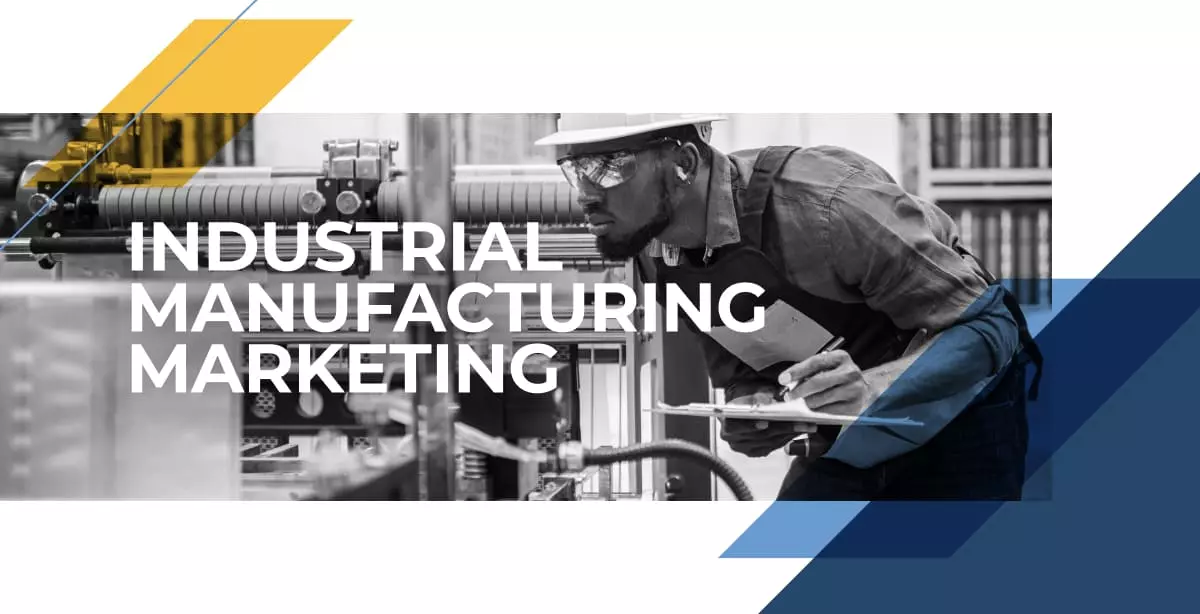Industrial Manufacturing Marketing in 2025: 4 Key Strategies To Watch

With 2025 on the horizon, the lessons from 2024 make one thing clear — adaptability will be key for B2B marketers to thrive. Industrial manufacturers will need to navigate a changing landscape that demands not only innovative products but also meaningful relationships with customers. They’ll also need to navigate rapidly evolving tools, trends and media landscapes that define how marketing works for industrial manufacturers.
In 2024, we saw changes in the digital landscape, from shifting audience on social media platforms to major developments in the internet search space. Google’s new privacy policies transformed SEO and how marketers target specific audiences, while regulators also put their monopolistic power on notice with a landmark ruling that could transform the tech landscape even more in 2025.
Looking ahead to 2025, these four key trends have the potential to make the biggest impact in industrial manufacturing marketing next year. Here, we’ll look at how these strategies are reshaping the industry and how your team can use them to their fullest potential.
1. Thought Leadership: Building Trust Through Insight
In today’s increasingly complicated market landscape, B2B buyers want brands that guide them through complex decisions. They have a broad range of challenges to navigate — from the breakneck pace of technology to constantly shifting regulatory regimes to increasing demands for efficiency. By offering knowledge and insights to help solve these challenges, brands can create new and deeper connections with their audience that go beyond the transactional. Cultivating your company’s position as a thought leader in the industry is a powerful way to build trust and credibility, which in turn can lead to more interest in your products and services.
This can play an especially important role during new product launch campaigns. Engineers, manufacturers and other B2B-types value innovation and new ways of thinking to solve business challenges. By tying your product to a deeper story — how it fits into the evolution of the industry as a whole or how it solves big-picture challenges beyond productivity on the floor — you can inspire potential customers and cement your role as an innovative thought leader.
How To Get Started With Thought Leadership:
- Create High-Value Content: Publish content like blogs, white papers, case studies and webinars that provide insights and solutions to real-world problems.
- Cultivate Influence: Enlist your executives and in-house SMEs to create content and foster their personal brands or engage industry influencers from outside your organization to collaborate on content.
- Engage Actively: Join industry discussions wherever possible to demonstrate your expertise — whether on LinkedIn, at trade shows or media roundups.
- Leverage the Media: Take your thought leadership content beyond your website — repurpose content as an editorial or pitch blog posts as story ideas to trade publications.
2. Data and AI Integration: Improving Precision and Speed
Incorporating data and AI into customer service and support is becoming essential for industrial brands. With rising customer demands for faster, more personalized solutions, these tools allow businesses to operate more efficiently while delivering better experiences. AI-driven automation streamlines service by handling routine tasks, allowing human agents more time to focus on complex issues while data-driven insights allow for more accurate, individualized support. The result is faster response times, lower operating costs and a more scalable support system.
But it’s not just about efficiency — it’s also about remaining relevant in a market that rewards high-performing, customer-centric brands. Companies risk falling behind as competitors begin using tools to deliver smarter, faster solutions. Adopting new technology like AI early not only lets brands demonstrate innovation, it also gives them a leg up to work through issues, streamline integration and perfect the use of these tools to ultimately strengthen their position as industry leaders.
Practical Ways To Use Data and AI:
- Accelerate Responses: AI can streamline responses by anticipating common customer needs, instantly addressing common inquiries and routing complex issues to the right person to speed up resolution times.
- Personalize Recommendations: Use data analytics to customize recommendations based on each customer’s previous purchases or customer behavior patterns.
- Monitor Customer Sentiment: AI tools can analyze feedback from surveys, tickets or social media to uncover trends, allowing businesses to proactively address issues or capitalize on positive feedback.
3. Full Life Cycle Marketing: Engaging Customers After the Sale
Too often, marketing ends after a product launch. However, there’s a huge opportunity to keep engaging customers through services, support and add-ons. Full life cycle marketing extends the customer relationship, helping brands build loyalty and generate long-term value.
Effective full life cycle marketing also creates a sense of community around your brand. By showing customers they’re heard and valued for their loyalty, you encourage deeper engagement and satisfaction. This not only increases the likelihood of repeat purchases but also inspires customers to share their positive experiences with others, expanding your reach. When customers see your company as a partner in their success, it builds a competitive advantage for the long haul.
How To Implement Full Life Cycle Marketing:
- After-Sales Support: Stay connected with customers post-purchase through helpful follow-ups — offering guidance, troubleshooting or educational materials.
- Cross-Selling and Upselling: Offer additional products or services that complement the original purchase, such as maintenance packages, extended warranties or upgrades.
- Customer Feedback: Use surveys or other feedback channels to get a better understanding of the customer experience. This can guide product improvements and gives customers a greater sense of partnership.
- Exclusive Loyalty Programs: Reward repeat customers with perks like discounts, early access to products or priority service to encourage long-term engagement with your brand.
4. Community Impact and Sustainability: Meeting Expectations
Sustainability and community-focused solutions are no longer just nice-to-haves. They’re cornerstones to modern business strategy that protect long-term viability and build trust with today’s customers, who increasingly value responsible business practices. For industrial brands, demonstrating environmental responsibility and community engagement can strengthen relationships and attract like-minded clients. These efforts also position businesses as leaders in addressing global challenges, enhancing their reputation and overall market appeal.
To maximize the impact of these initiatives, transparency is key. By clearly showcasing progress and compliance with frameworks like the Corporate Sustainability Reporting Directive (CSRD), brands can transform regulatory obligations into strategic advantages. Instead of burying your achievements in dense sustainability reports, leverage the information to create new marketing materials that highlight your progress and build trust with customers, investors and other stakeholders. In this way, brands can create a more compelling narrative that not only meets regulatory standards but also sets them apart as leaders in a competitive market.
Ideas for Promoting Community Impact and Sustainability:
- Green Initiatives: Implement eco-friendly practices like reducing waste, adopting renewable energy or sourcing sustainable materials to minimize your environmental footprint.
- Community Programs: Partner with local organizations, sponsor events or invest in nearby projects to show your dedication to social responsibility.
- Support Your Customers’ Sustainability Goals: Highlight the ways your products or services help customers achieve their own sustainability goals.
- Turn Compliance Into Opportunity: Leverage mandatory sustainability reporting to create marketing content like infographics or case studies to highlight your achievements and strengthen your market position.
Final Thoughts
The landscape of industrial manufacturing marketing is evolving, and the businesses who can adapt will emerge as leaders. These four strategies — thought leadership; data and AI integration; full life cycle marketing; and community impact — can help industrial brands strengthen their market presence, foster lasting customer relationships and drive growth.
Success requires more than adopting new tactics — it demands a clear vision and the right expertise to execute it effectively. At Godfrey, we’re proud to partner with industrial brands to bring this vision to life, turning ambitious goals into results-driven marketing strategies. If you’re ready to explore how these approaches can unlock potential for your business, reach out or explore more of our insights to see how we can help set your brand apart in your industry.
Sign Up for our Newsletter - Get agency updates, industry trends and valuable resources delivered directly to you.
Ruben van der Meij - Vice President, Account Service
A trusted advisor and problem solver, Ruben leads accounts while also helping to grow and develop members of the account team.




